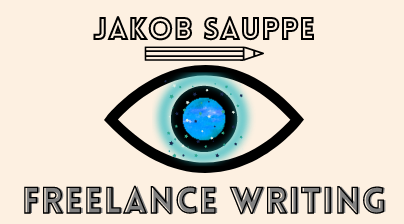The Jupiter Clock: Laplace Resonance And More
Images made with Space Engine
It’s well-known that objects in space are perpetually set in motion—that is, with no resistance comparable to our atmosphere on Earth, most everything in space moves at a (more-or-less) fixed rate at all times.
But there are also some occurrences where objects will move together in sync like a choreographed dance. In other words, they create orbital resonance with one another. This is particularly true for three of Jupiter’s four Galilean Moons: Io, Europa, and Ganymede. These moons are locked into a beautiful pattern of orbits called Laplace Resonance which makes those OCD astronomers out there breathe a little easier.
But first, let’s try to understand plain old orbital resonance.
For a quick recap: all celestial bodies contain mass, which causes them to generate gravity. Gravity usually stems from the center of the object and emits outward in all directions like an aura. The force of gravity is responsible for keeping the moon from falling to the Earth, or—more accurately—the Earth from drifting away from the sun. Gravity keeps everything in place up there.
As objects move in space, sometimes they come close enough together that their gravity will mix with each other. The more massive object will exert a greater force on the less massive object, and both objects will have their movement through space adjusted by that force. Most of the time these changes are small, but a particularly large object can eject a much smaller object out of the solar system, or even plummet it into the sun.
When objects have orbital resonance, it means they pass by one another so frequently that, over time, their motion and orbits complement one another—one object’s velocity is dependent on another object’s velocity. In the case of an unstable resonance, this happens only for a little while before the gravitational exchange throws the orbits off enough to destroy the resonance. Unstable resonances are the most common out there.
Jupiter’s first three Galilean Moons—Io, Europa, and Ganymede—have orbital resonance with each other.
However, there are other times where orbital resonances can be stable: any errors that arise in the pattern can be self-corrected by the recurring motion existing between the objects. That means this system can potentially hold on for a very, very long time.
For a good example of orbital resonance, imagine a giant pendulum… or for a more common metaphor, a person in a swing. When you push someone on that swing, they will eventually come back to you for another push. By pushing them, you ensure their swinging momentum never gets too low or—dare I say—too high (you don’t want to catapult a child to space, after all). By feeling out the momentum each time you catch the swing, you’re able to adjust the speed of the swinger to keep things stable.
That’s what orbital resonance is like: a punctual, recurring meet-up between multiple celestial bodies where they push or pull one another before leaving. These objects have become so adjusted to these tidal exchanges that their orbits are completely shaped around them.
So how are Jupiter’s moons special?
The orbits of Jupiter’s inner three moons function in 1:2:4 resonance.
Well, it turns out that Io, Europa, and Ganymede created their own type of three-body orbital resonance called Laplace Resonance, coined by Pierre-Simon Laplace who discovered the equilibrium of their motion. Laplace was also known as the “French Newton” due to his contributions to the understanding of planetary motion and physics, amongst other big-brain findings.
Laplace Resonance is relatively simple to understand. All three moons orbit Jupiter at their own speeds. For every two orbits of Io, Europa orbits once. For every four orbits of Io, Ganymede orbits once. This means the system is 1:2:4, producing two Io-Europa conjunctions and three Io-Ganymede conjunctions for every Europa-Ganymede conjunction, which is the least common of the bunch.
The amazing part is that this system is completely self-sustaining and orderly, producing an almost clock-like structure to its movement—particularly between Io and Ganymede. Io divides time into smaller increment with its period lasting about 1.77 Earth days per orbit around Jupiter, and Ganymede divides time into longer increments with an orbital period of roughly four times Io’s, or 7.1 Earth days.
Who knew outer space could be so routine, right?
But Io-Europa-Ganymede isn’t the only Laplace example out there.
In steps the mysterious exoplanet system of Gleise 876. cue sci-fi tones
Gleise 876, featuring its four planets. The outer three exhibit Laplace Resonance just like Io-Europa-Ganymede.
Gleise 876 is a red dwarf star nestled in the constellation Aquarius. By 2010, four extrasolar planets were discovered around it, dubbed Gleise 876 b, c, d, and e.
While Gleise 876 d orbits extremely close to its star, it turns out the other three have developed Laplace Resonance between each other, making this system the second natural example of Laplace Resonance to be observed… ever. This three-body planet system maintains its synchronized orbital patterns despite the trouble maker of the trio, Gleise 876 b, having an extremely inclined orbit compared to the other two planets.
Oribtal resonance is a great example of uniformity in the cosmos, and is reassuring on those clumsy days when you bump your shin on every piece of furniture in the house. Even if your day is a bit incongruent, at least the stuff in space can hold it together!
Have you ever heard of Laplace Resonance before? Are there any other examples out there that I missed?





